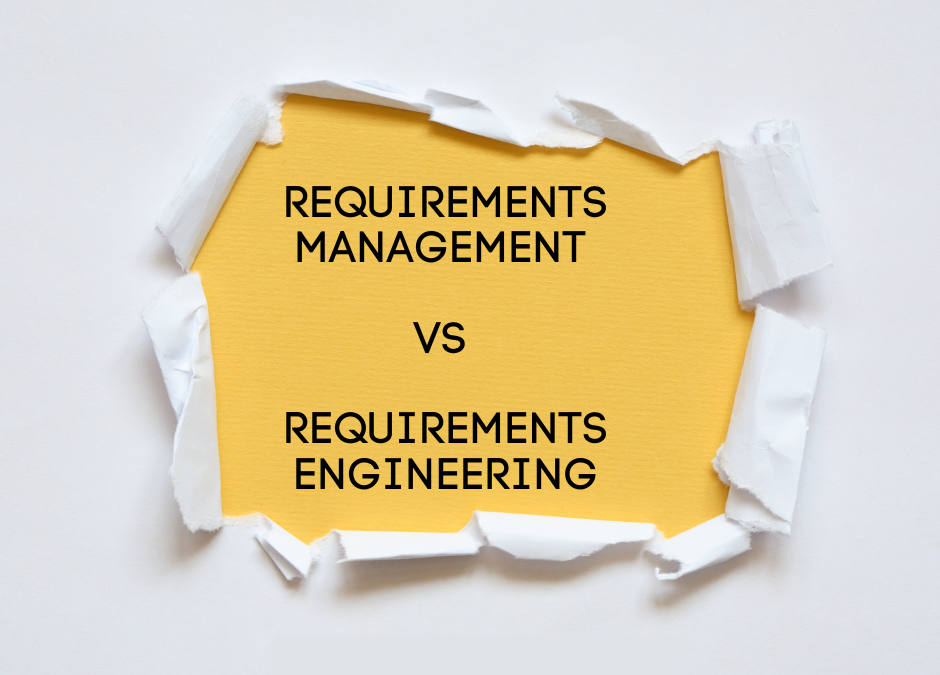Requirements Management vs Requirements Engineering
Requirements management, often abbreviated as RM, is a discipline that takes many different forms and activities. Requirements engineering, or RE, on the other hand, is a complex and multifaceted task that is difficult to achieve because of its complexity. This article examines the difference between requirements management and requirements engineering, where they come from, and why they are important for software development.
The main difference between requirements management and requirements engineering is that requirements management is focused on managing all aspects of the requirements life cycle. In contrast, requirements engineering focuses on eliciting, analyzing, and documenting requirements. Requirements engineering helps ensure that all stakeholders clearly understand the project’s objectives and can provide input into the requirements-gathering process. The main difference between these two is that requirements management focuses on the life cycle of the requirements. In contrast, requirements engineering focuses on the development of the requirements.
Requirements management ensures that the formal requirements are identified, prioritized, and tracked throughout the project lifecycle. Requirements engineering is concerned with understanding the needs of the stakeholders and translating them into specific, testable, and achievable requirements.
Requirements engineer vs Requirements manager
A requirements engineer is responsible for ensuring that the product being developed meets the customer’s needs. They work with customers to understand their requirements and translate them into specific, measurable, achievable, relevant, and time-bound (SMART) goals. Skills that are important for requirements engineers include good communication skills, analytical skills, problem-solving skills, and attention to detail. If you have these skills and are interested in a career in software development, then a job as a requirements engineer might be a good fit for you!
A requirements manager is responsible for ensuring that the requirements are managed throughout the product development lifecycle. They work with the project team to ensure that the requirements are understood, traceable, and testable. They should know RM tools like Doc Sheets.
Requirements Manager and Requirements Engineer Activities
Requirements manager activities include gathering user input, analyzing stakeholder needs, documenting requirements, maintaining traceability of requirements throughout the development process, and ensuring that all stakeholders agree on the final set of requirements. Requirements engineer activities include developing use cases and user stories, conducting interviews and focus groups with stakeholders, creating prototypes to gather feedback on proposed solutions, and writing technical specifications.

Requirements engineering elicitation methods
Requirements elicitation is the process of gathering requirements from stakeholders. Many methods can be used to gather requirements, and the most appropriate method varies depending on the project and the stakeholders involved. Some common requirements elicitation methods include interviews, focus groups, workshops, and surveys.
Interviews are a great way to get one-on-one time with stakeholders to discuss their needs and expectations for the project. Focus groups allow for a more informal discussion among a small group of stakeholders. Workshops are structured events where stakeholders work together to identify and document requirements. Surveys can be used to gather feedback from many stakeholders at once.
Whichever elicitation method is used, it’s important to ensure that all stakeholders have an opportunity to provide input. Doing this ensures that every need is recorded and that all stakeholders support the final product.

Importance of Requirements Management Tools for requirements engineering
Requirements management tools are important for requirements engineering because they help to ensure that all stakeholders have a common understanding of the project requirements. They also help to ensure that changes to requirements are tracked and communicated to all stakeholders in a timely manner. In addition, these tools can help to automate some of the tasks associated with requirements management, such as creating reports and tracking progress.
- Improved communication between stakeholders
- Greater transparency of requirements
- Easy tracking of changes to requirements
- Automation of tasks associated with requirements management
Conclusion:
Requirements management and requirements engineering are two different, but related disciplines and both disciplines are important for successful project delivery. Requirements management ensures that all stakeholders have a common understanding of what needs to be delivered, while requirements engineering ensures that the solution meets the needs of the stakeholders.

